The perfect FOUNDATION SHADE is akin to laying the groundwork for a great architectural masterpiece. It all begins with a solid foundation and in my article you get to find the ideal Foundation color match, I’ve discovered that the key lies in three fundamental factors, understanding my skin tone and undertone, mastering the art of swatch testing, and adapting my shade with the changing seasons for a flawless match throughout the year.
Gone are the days of limited foundation options, where settling for a Foundation Shade often led to the infamous neckline mismatch. Today’s beauty landscape offers a diverse array of shades, finishes, and coverage levels, making the foundation as customizable as a favorite Starbucks order. However, this abundance can also pose a challenge in navigating the vast choices. Seeking guidance from makeup experts Daniel Martin and Allen Avendaño, I’ve learned the nuances of choosing the right foundation – a product that not only covers imperfections but also enhances my natural glow.
As a staple in my makeup routine, the foundation plays a pivotal role in achieving a seamless and radiant finish. Yet, the plethora of brands and formulations can make this selection process daunting. Drawing insights from celebrity makeup artists Jenna Menard and Victor Henao, along with dermatologist Hadley King, MD, has provided me with invaluable tips. Now, armed with knowledge, I’m ready to unravel the mysteries of picking the perfect foundation color and unlocking the tailored beauty of my dreams.
1. Understanding Your Skin Tone:
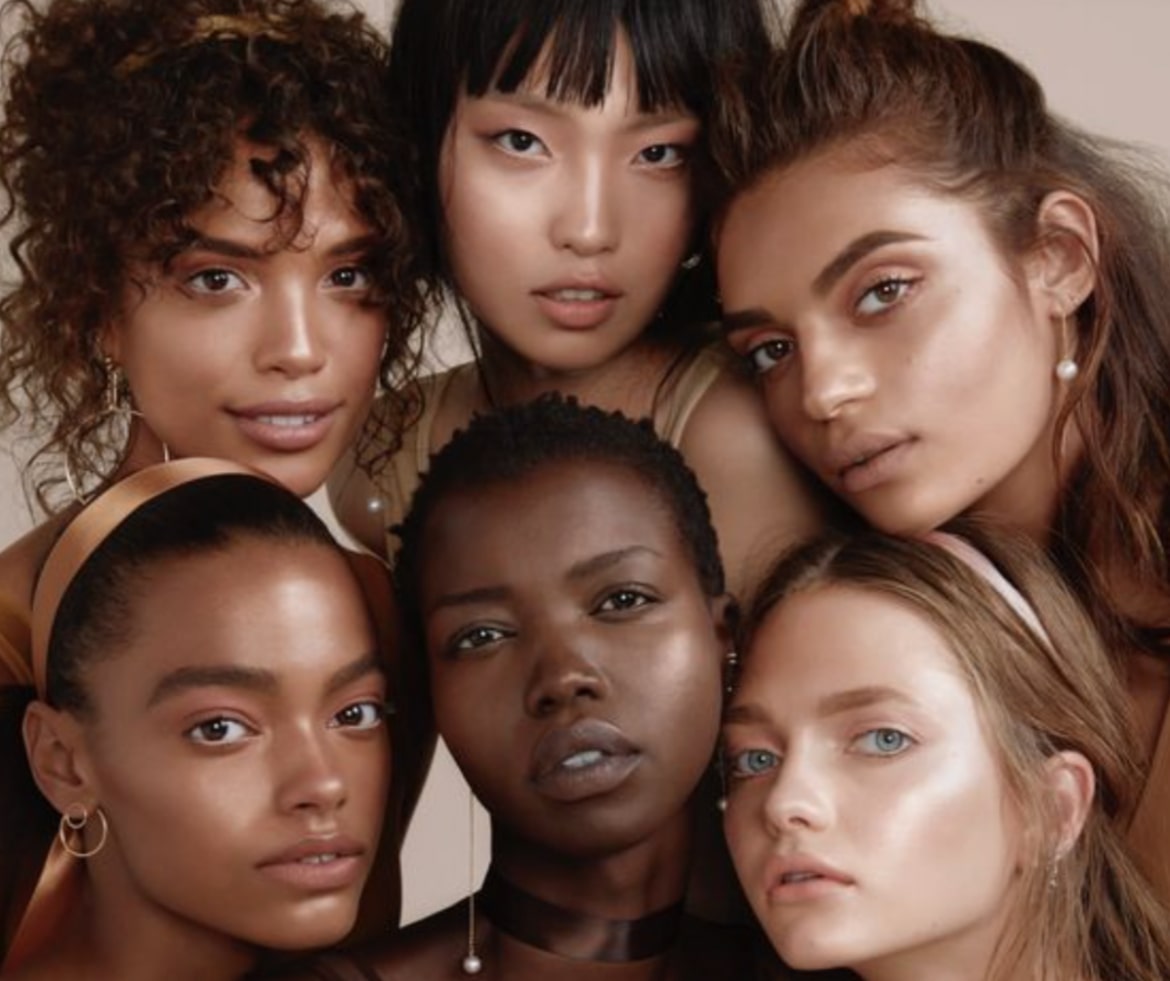
the journey of finding your ideal foundation shade begins with a deep understanding of your skin tone. Whether fair, light, medium, or deep, your complexion’s natural color sets the stage for the perfect match. To navigate any variations in tone across different facial areas, focus on your jawline – a reliable indicator away from the apple of your cheek’s natural flush.
Understanding Skin Types and Concerns
The canvas of your skin comes with its own set of characteristics. Dry, oily, and combination skin types add complexity, along with concerns like dullness, dehydration, breakouts, and sensitivity. Tailor your foundation choice to address these specific needs, ensuring that the formula complements rather than contradicts your skin’s nature.
2. Decoding Your Undertones
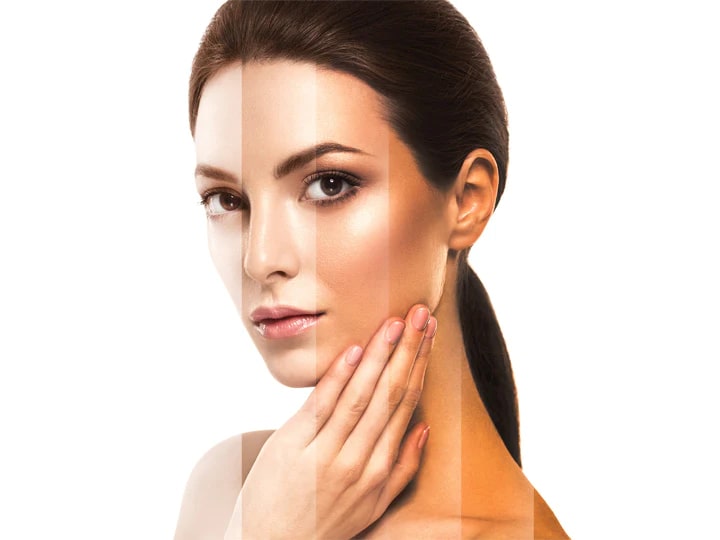
The magic of finding the right foundation shade lies in understanding your undertones – the subtle hues beneath your skin’s surface. Undertones can be warm, cool, or neutral, and they usually remain consistent, unlike changes in skin tone throughout the seasons. A quick assessment of your veins can reveal your undertones: purple or blue veins indicate cool undertones, green veins suggest warm undertones and blue-green veins point to neutral undertones.
1. Choosing the Right Undertone
For warm undertones, opt for foundations with yellow, gold, or peach undertones. If your complexion leans cool, go for foundation shades with pink undertones. Neutral undertones call for a balance of both gold and pink tones. To simplify this process, observe exposed areas of your body – redness and pink tones might suggest cool undertones, while golden, peach, and yellow hues lean towards warm undertones.
2. Strategic Use of Undertones
Beyond matching your foundation to your undertones, leverage these shades strategically. Combat redness with foundations featuring yellow bases or green-tinted color correctors. Address blue or purple undertones, such as dark circles, with products boasting peachy or golden hues for a balanced and natural finish.
3. Undertone Identification: A Personalized Approach
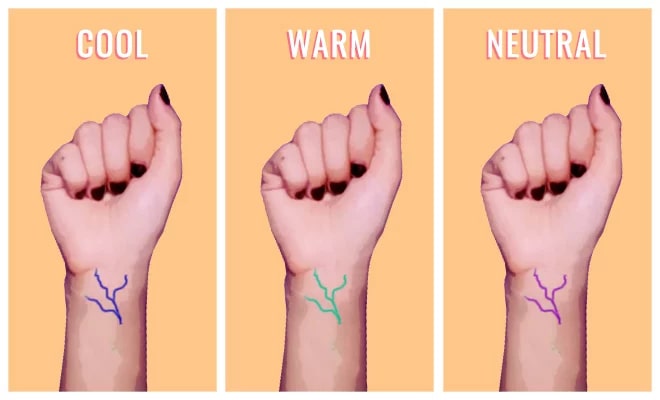
1. Check the Color of Your Veins
Examine the veins on your wrist under natural light. Green veins indicate warm undertones, blue/purple veins suggest cool undertones and blue/green or matching skin color veins point to neutral undertones.
2. Sun Reaction
Consider your skin’s reaction to UV exposure. Easy burning signals cool undertones, while those who tan without burning often have warm undertones.
3. Metal Jewelry Preference
Your preference for silver or gold jewelry can provide insights. Silver suits cool undertones, while gold complements warm tones. If both work for you, your undertone is likely neutral.
Undertone Identification Recap
- Cool Undertone: Red, pink, or bluish complexion, veins appear blue, tendency to burn rather than tan, looks best in silver jewelry.
- Warm Undertone: Yellow, peachy, or golden complexion, veins appear green, tans easily without burning, looks best in gold jewelry.
- Neutral Undertone: A mix of warm and cool tones, sometimes burns and sometimes tans suits both gold and silver jewelry.
4. Seasonal Adjustments

As the seasons change, so may your skin tone. Your summer shade, perfect with a glowing tan, may not suffice in winter. While your undertone remains consistent, the depth of your foundation shade should be re-evaluated to ensure a flawless complexion throughout the year.
5. Choosing the Right Foundation Coverage
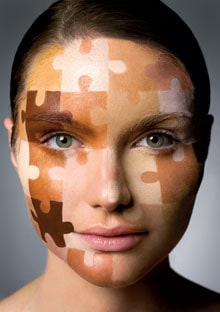
1. Consider Your Coverage Needs
When selecting foundation coverage, assess how much of your natural texture you want to reveal. Opt for lightweight foundations or tinted moisturizers for a natural look. If more coverage is desired, choose a medium-coverage foundation that can be built up for fuller coverage. Reserve full-coverage foundations for specific needs, such as long-wear or concealing acne and discoloration.
2. Texture Finishes Within Each Level
Whether you prefer fuller or sheer coverage, various texture finishes can be achieved within each level. Different formulas contribute to a dewy or matte look, depending on your desired outcome. Understanding the potential finishes is crucial in making the right choice for your needs.
6. Choosing Your Shade: Practical Tips
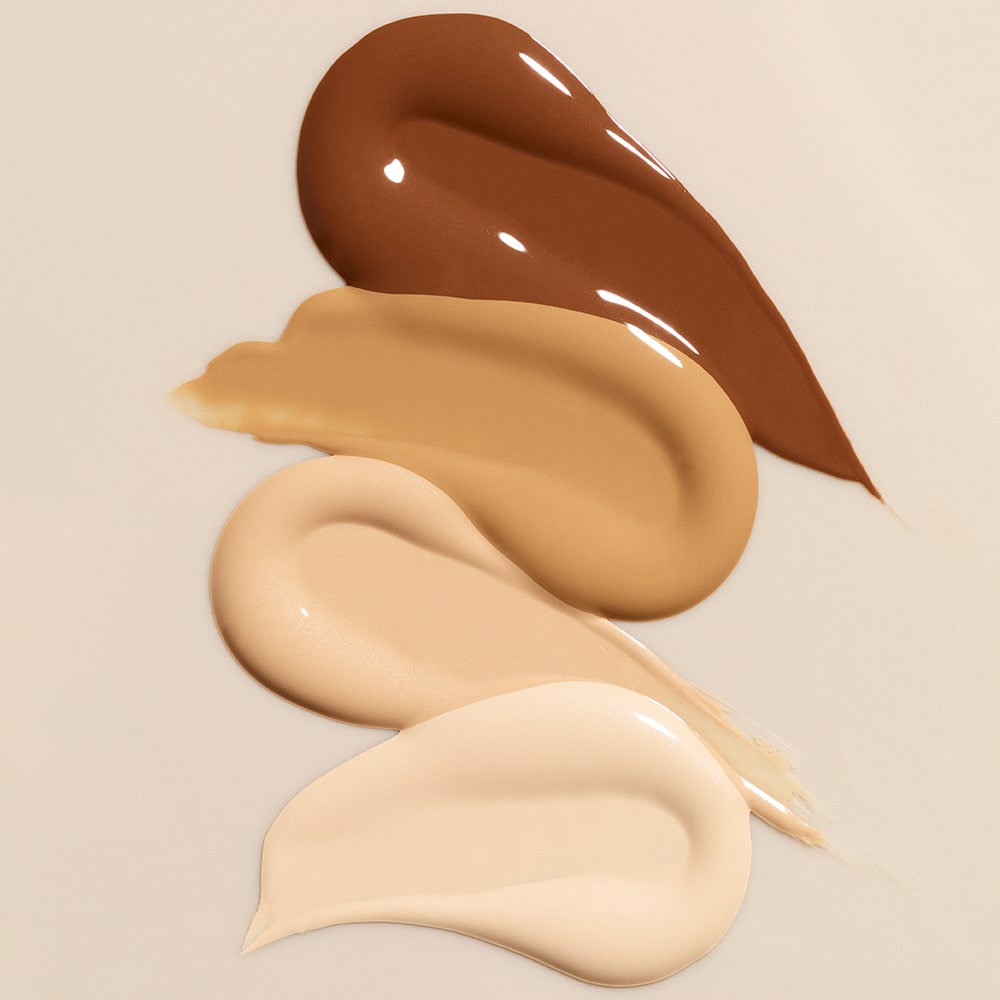
1. The Face Method
For a precise shade match, apply foundation toward the center of your face and blend it out toward the hairline. This ensures harmony with the sides of your cheeks and the middle of your neck. Adjusting for a slightly lighter shade than your face can be considered if your neck is lighter, ensuring a seamless transition.
2. The Swatches Method
While swatching on the forearm is common, the skin tone on this part may differ significantly from your face. Apply potential shades to your chest for a more accurate match, considering that foundation oxidizes and naturally darkens with wear.
3. Testing on Bare Skin
To achieve an accurate foundation color match, test shades on bare skin. This is particularly important when you already wear makeup, as it can interfere with the accuracy of shade selection. If you frequently use fake tan, match your foundation shade to the undertone of your skin after applying self-tanner.
4. Use Sample Sizes
While you may have a favorite foundation, exploring other options through samples is a great way to stay informed about new formulations. Sampling different foundations allows you to adapt to the evolving landscape of beauty products and find the best fit for your skin.
7. Customizing Your Foundation
Even with a myriad of foundation shades available, you may find yourself with a product that’s slightly off. Fear not – you can customize your foundation to better suit your needs. Mixing foundation with other products can alter the shade slightly. For darkening, consider blending with blush, bronzer, or a darker foundation or concealer. Lightening options include using a lighter foundation or concealer, primer, moisturizer, and powder.
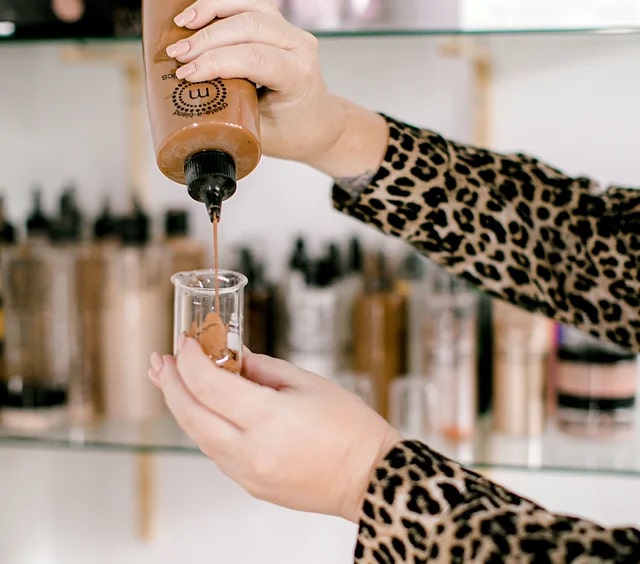
Incorporate ingredients like turmeric for a golden tint or cocoa powder for a more brownish hue to match warm undertones. Blush can be a valuable addition to cooler pink undertones. This personalized approach ensures that your foundation complements your unique skin characteristics.
Conclusion:
In my pursuit of the ideal Foundation Shade, I’ve unearthed the secrets to achieving a flawless complexion that seamlessly blends with my unique skin tone. Understanding the trifecta of factors – my skin tone and undertone, adept swatch testing, and the art of adapting shades with the seasons – has been transformative. The evolution of foundation offerings, from a limited palette to an expansive spectrum, reflects a beauty landscape that caters to diversity, ensuring everyone finds their perfect match.
Guided by the wisdom of makeup maestros Daniel Martin and Allen Avendaño, I’ve navigated through the myriad choices, discovering that foundation is not just a cosmetic but a canvas for individual expression. It’s a personalized Starbucks order, with options as vast and unique as the hues on an artist’s palette.
As Foundation Shade plays its pivotal role in my daily routine, the insights from experts like Jenna Menard and Victor Henao, along with the expertise of dermatologist Hadley King, MD, have been my compass. Armed with this newfound knowledge, I’m equipped to curate my radiant canvas, a masterpiece that evolves with the seasons yet remains consistently tailored to my ever-changing beauty needs. The quest for the perfect foundation has not just been about makeup; it’s been a journey of self-discovery, empowerment, and the celebration of the diverse hues that make each of us uniquely beautiful.
Frequently Asked Questions:-
How do I determine my skin tone for the perfect foundation match?
Start by examining your skin tone, ranging from fair to deep. Check your jawline for a consistent indicator, considering any unevenness. Address specific concerns like eczema or desiring a luminous finish, tailoring your foundation search accordingly.
What undertone should my foundation match?
Undertones – warm, cool, or neutral – play a crucial role. Check your veins; green suggests warm, blue/purple indicates cool, and blue/green or matching your skin color leans towards neutral. Choose foundation shades with corresponding undertones for a natural look.
How can I tell if I have warm, cool, or neutral undertones?
Observing exposed areas like the chest and shoulders helps. Red and pink hues suggest cool undertones, while golden, peach, and yellow tones indicate warm undertones. Neutral undertones can have a mix, and if none stands out, you likely have neutral undertones.
Should I update my foundation shade with the seasons?
Yes, as your skin tone changes with seasons, adapt your foundation’s depth while maintaining consistent undertones for a flawless complexion year-round.
How do I choose the right coverage level for my foundation?
Consider your desired natural texture visibility. Opt for lightweight foundations or tinted moisturizers for a natural look, or go for medium coverage that can be built to fuller coverage as needed.
What’s the best method for testing foundation shades?
Use the Face Method by blending towards the hairline for a seamless match. Alternatively, try the Swatches Method by applying shades to your chest. Always test in natural lighting for accurate results.
Can I customize my foundation if it’s not a perfect match?
Yes, mix with other products to adjust the shade. Darken with bronzer or a darker foundation and lighten with primer, moisturizer, or powder. Add turmeric or cocoa powder for undertone adjustments.
Why sample different foundations?
The technology in formulas evolves, so regularly sampling different foundations helps discover new options that may better suit your skin’s changing needs.
What should I consider when choosing a foundation for specific skin concerns?
Tailor your foundation to address individual skin concerns, such as dryness, oiliness, combination skin, dullness, dehydration, breakouts, or sensitivity. Look for formulations that align with your specific needs for optimal results.
How can I tell if a foundation has the right undertones for color correction?
To address specific concerns like redness or dark circles, choose foundations with undertones strategically. Yellow-based foundations offset redness, while peachy or golden undertones can reduce the appearance of blue or purple tones, making them ideal for color correction.

